Tremor-related motor unit firing in Parkinson's disease: implications for tremor genesis
- PMID: 19703960
- PMCID: PMC2770149
- DOI: 10.1113/jphysiol.2009.173989
Tremor-related motor unit firing in Parkinson's disease: implications for tremor genesis
Abstract
Muscle tremors reflect rhythmical motor unit (MU) activities. Therefore, the MU firing patterns and synchrony determine the properties of the parkinsonian force tremor (FT) and the neurogenic components of associated limb tremors. They may also be indicative of the neural mechanisms of tremor genesis which to date remain uncertain. We examined these MU behaviours during isometric contractions of a finger muscle in 19 parkinsonian subjects. Our results reveal that the parkinsonian FT is abnormally large. Like the physiological FT, it is accompanied by in-phase rhythms in all MU activities. However, there exist two important differences. Firstly, the synchrony during the parkinsonian FT is stronger than the normal one and therefore contributes to the FT enhancement. Secondly, the synchronous MU components partly represent rhythmical sequences of spike doublets and triplets whose incidences directly reflect the differences of the MU firing rates to the FT frequency. According to our analyses, the latter frequency coincides with the MU recruitment rate. Consequently, the numerous medium- and small-sized active MUs contribute rhythmical twitch doublets and triplets, i.e. large force pulses, to the parkinsonian FT. The impact of this effect on the FT amplitude is found to predominate over the impact of the augmented synchrony. Importantly, apart from the rule governing the occurrence of doublets/triplets, the mean interspike intervals within such spike events are fairly fixed around 50 ms. Such regularities in MU activities may reflect properties of the neural input underlying the FT, and thus represent a basis for more focused studies of the generator(s) of parkinsonian tremors.
Figures
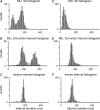
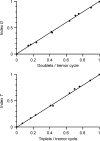
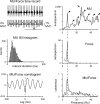
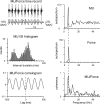



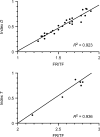
References
-
- Allum JH, Dietz V, Freund HJ. Neuronal mechanisms underlying physiological tremor. J Neurophysiol. 1978;41:557–571. - PubMed
-
- Amtage F, Henschel K, Schelter B, Vesper J, Timmer J, Lücking CH, Hellwig B. Tremor-correlated neuronal activity in the subthalamic nucleus of Parkinsonian patients. Neurosci Lett. 2008;442:195–199. - PubMed
-
- Baker JR, Davey NJ, Ellaway PH, Friedland CL. Short-term synchrony of motor unit discharge during weak isometric contraction in Parkinson's disease. Brain. 1992;115:137–154. - PubMed
-
- Barry BK, Pascoe MA, Jesunathadas M, Enoka RM. Rate coding is compressed but variability is unaltered for motor units in a hand muscle of old adults. J Neurophysiol. 2007;97:3206–3218. - PubMed
Publication types
MeSH terms
LinkOut - more resources
Full Text Sources
Medical
Research Materials

